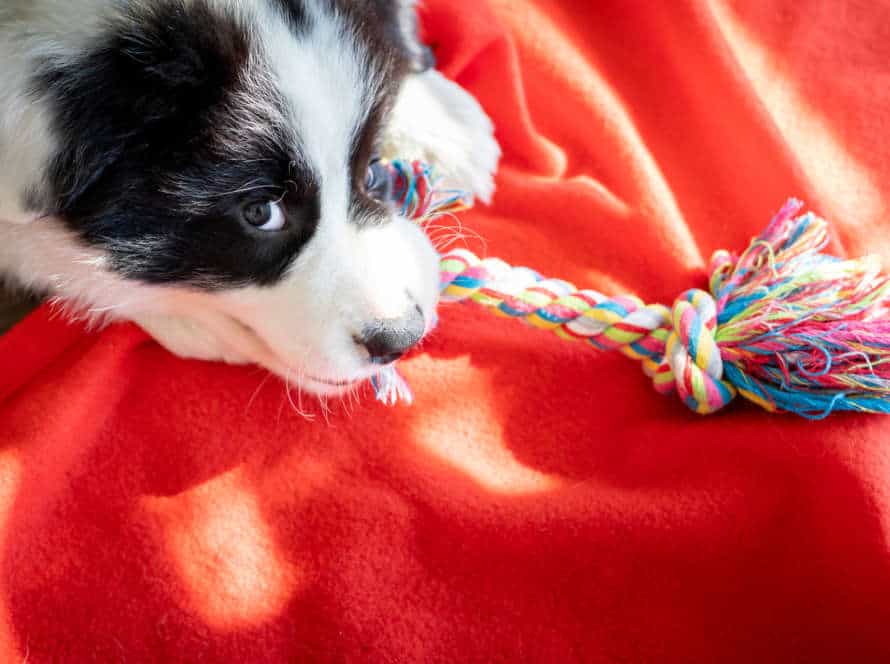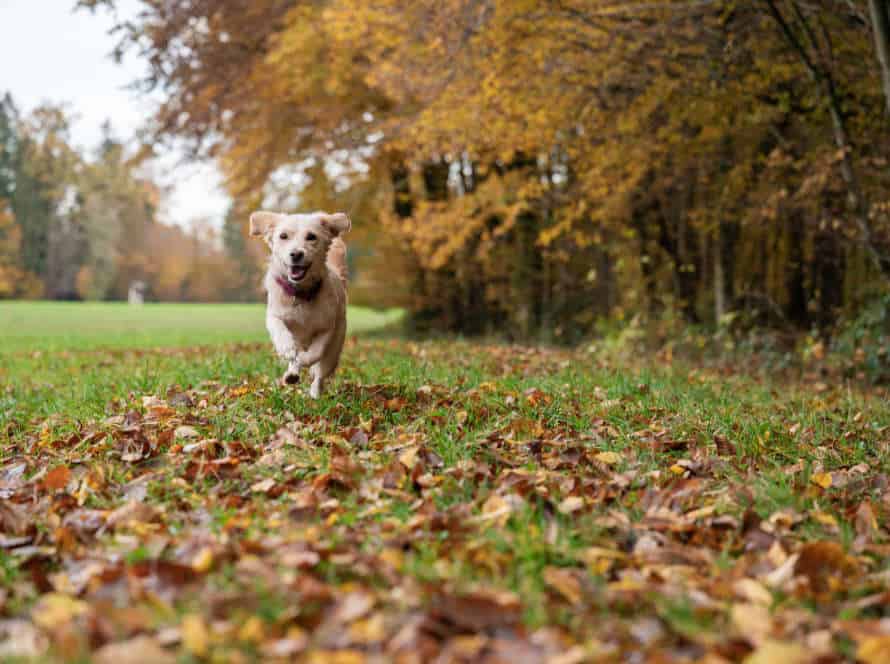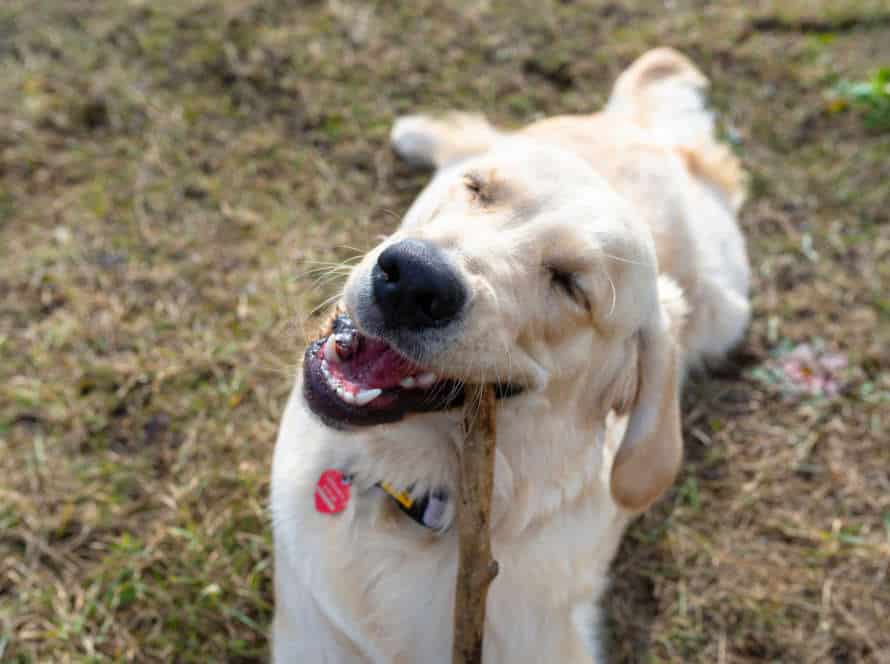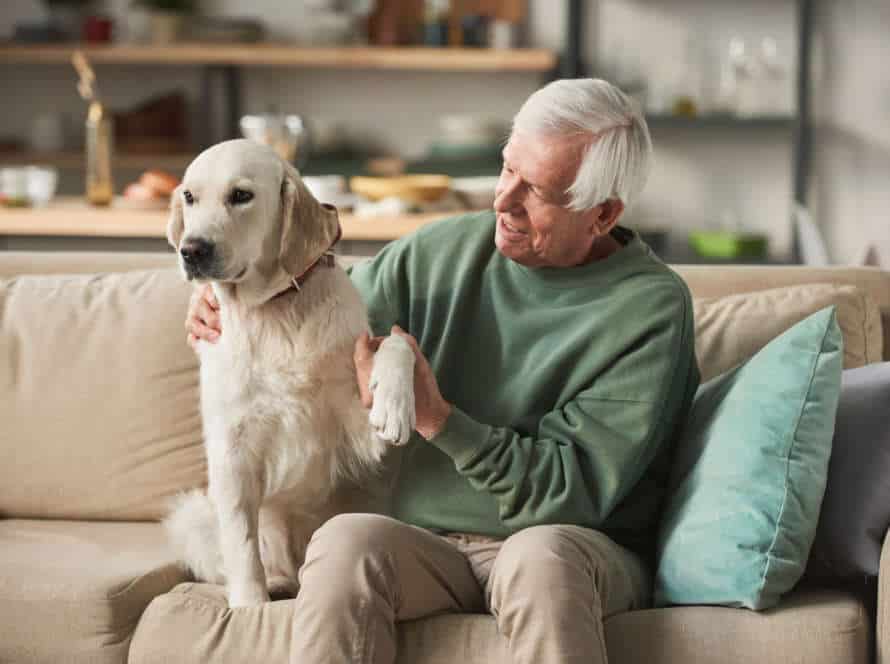How to Train Your Dog to Stay: A Comprehensive Guide
Training your pup to stay when commanded is really important! Here’s how:
- Get your pup to “sit”.
- Show your palm and say “stay” in a gentle, but firm voice.
- Step back a bit and wait. Keep your hand up.
- Increase the distance and time that your pup stays each time. Give treats for good behavior. If your pup moves, start over.
Pro Tip: Always be positive and patient. Training takes time and consistency. When your pup has mastered the “stay” command, you’ll both have a happier life together!
Understanding the Basics of Dog Training
Training your pup is a must for responsible pet owners. Understanding dog training basics is the first step to teaching your furry mate new orders and stunts.
The fundamentals of dog training comprise:
- Positive reinforcement: Give your dog snacks, compliments, and affection when they display wanted behaviors.
- Consistency: Use the same instructions and training systems when you work with your dog.
- Patience: Training takes effort and time, so be patient and don’t get mad if it’s slow.
- Persistence: Constant, consistent training sessions are key to success.
To teach your dog to stay, do these steps:
- Start by having your pup sit and then use the “stay” command while putting your hand up in a “stop” pose.
- Step away a few steps and come back right away to your dog, praising and rewarding them if they stayed put.
- Gradually extend the time and distance for them to stay, still giving rewards and compliments for success.
Pro tip: Use treats that are high-value, like small bits of cooked chicken or cheese, to motivate your dog during training.
1.1. Benefits of Training Your Dog to Stay
Training your pup to stay? It’s a must-have skill! It has many advantages that you and your doggie can enjoy.
Benefits of training your pup to stay include:
- Safety – Teach your pup to stay and you help avoid accidents and injuries.
- Convenience – The stay command gives you peace of mind, knowing that your pup will wait for you when you’re out shopping.
- Respect – The stay command establishes communication and respect between you and your pup.
- Bonding – Training your pup to stay helps you bond more, creating trust and friendship.
1.2. Common Misconceptions about Dog Training
Dog owners may have faulty ideas about training their pup. Here are 3 common misconceptions:
- Punishment is effective – Wrong! It will only make your dog anxious.
- Dogs obey naturally – Not true. You need to show them how.
- Training is just for puppies – No way! Dogs of all ages can learn.
To teach your pup to stay, try these steps:
- Find a low-distraction spot.
- Say “sit”.
- Ask them to “stay” and step back a bit.
- Reward good behavior with positive reinforcement.
- Add more distance and duration over time. Be patient and kind!
1.3. Setting Realistic Expectations for Your Dog’s Training
Creating realistic expectations is essential when teaching your pooch to stay. It’ll help you manage your frustrations and spur your dog’s progress. Here are several tips:
- Start short: Don’t expect your pup to remain in one place for long periods from the get-go. Start with brief sessions and let the duration grow as they get more confident with the order.
- Be patient: Every pup learns differently and it could take some time for them to learn the ‘stay’ command.
- Cherish small wins: Notice and praise small successes, like if your pup remains in one spot for a few moments longer than before. These victories will motivate both you and your canine.
- Make it fun: Incorporate training into your playtime or daily routine. That way the sessions remain enjoyable. Pro Tip: Consistency is essential. Set a regular routine and stick to it, emphasizing positive behaviors and being patient with your furry pal.
Preparing to Train Your Dog to Stay
Training your pup to stay is a must for obedience. Patience and consistency, plus positive reinforcement are key! Here’s a guide:
- Choose a calm, familiar spot for your dog to focus on you.
- Use a firm voice to say “stay,” and hold up your hand.
- Gradually increase the distance between you and pup. Treats and praise for successful attempts of staying.
- Practice in different spots with distractions to reinforce the behavior.
- Train in short, regular sessions. This prevents fatigue.
Remember to reward positive behavior with verbal praise, pets, or treats. This will keep your pup motivated and eager to learn.
2.1. Choosing the Right Training Method for Your Dog
It’s crucial to pick the right training method for your pup. Here are some popular ones:
- Positive Reinforcement: Give treats, praise, or playtime as rewards for good behaviour. It’s an effective way to teach your dog to stay by having good experiences.
- Clicker Training: Use a clicker to signal your pup when they do something right. It’s a precise and consistent way to communicate during stay training.
- Leash and Collar: Gently guide your pup into sitting or staying with a leash and collar. Do this if they have mastered basic obedience and need reinforcement.
- Electronic Training: Use electronic collars to signal your pup when they misbehave or to reinforce good behaviour. This should only be done with a professional trainer’s guidance.
Consistency, patience, and positive reinforcement are key for successful stay training. Pro Tip: Start small and gradually increase the duration of the stay command as your pup masters it.
2.2. Gathering Necessary Supplies for Training
Before starting training, you need supplies. Here’s what to get:
- Leash & Harness: To keep your pup from running away.
- Treats: To motivate your dog with positive reinforcement.
- Clicker: To help your pet understand when the right actions are done.
- Timer: To time the stay, so your dog progresses.
- Training Area: A quiet, distraction-free spot for your pet to focus.
2.3. Setting Up a Safe and Quiet Training Environment
When training your pup to stay, it’s important to make a safe, peaceful atmosphere. To help, here are some tips:
- Choose an area in your home or yard that is free of distractions.
- Remove items like toys, treats, and other animals from the training spot.
- Allow your dog enough room to move around but not too much so they don’t get sidetracked.
- Keep noise to a minimum, especially when they’re first learning.
- Use positive reinforcement like treats and kind words.
- Be patient and stick with it. With the right setting, your pup will learn fast.
Teaching Your Dog the Basics of Stay Command
Teaching your pup to stay is an absolute must. It benefits communication, obedience, and safety. Here’s a guide on how to train it:
- Start with the sit command.
- Gather their attention with a treat or toy and say “stay,” then take a step back.
- Reward them with praise and a treat or toy if they stay in place.
- Gradually increase the distance and duration of the stay and reward their good behaviour.
- Now, introduce distractions like people and other animals.
- Be patient and consistent—no punishment or negative reinforcement.
Remember: the stay command takes time and practice. Don’t rush it!
3.1. Establishing Trust and Building Rapport with Your Dog
Trust and rapport with your pup are the basis of successful training. Here are some tips:
- Spend time with your dog daily and do activities they like.
- Use positive reinforcement like treats, praise, and play.
- Communicate using consistent tone, body language, and commands.
- Be patient, recognize each pup learns at their own pace.
- Once trust is built, you can start teaching commands like ‘stay‘.
Pro tip: Training takes time, effort and consistency. Stick with it and you’ll see results!
3.2. Teaching Your Dog the Sit Command
Training your pup the sit command is a must-do for obedience! It’s usually one of the first commands taught by many trainers. Here’s a guide on how to do it:
- Grab your dog’s attention with their name.
- Hold a treat close to their nose.
- Lift it up and back over their head.
- Their bottom will lower to the ground.
- Give them the treat and say “good dog“.
- Do this a few times a day.
- Eventually, they’ll sit on command without needing a treat.
Always reward your pup with a treat and praise after they obey.
3.3. Teaching Your Dog the Down Command
Training your pup to obey the ‘down’ command is a must. Here’s how:
- Command them to sit. This will show them that you are in charge.
- Hold a treat close to the ground and make the hand gesture for down. Your pup will follow the treat and lower itself.
- Once they’re down, click or say “good boy/girl” and give them the treat.
- Do this a few times a day, gradually making them wait for longer before the treat.
- When your pup is used to the ‘down’ command, practice it at other places with more distractions, like people or other animals.
- Always reward your pup when they obey the command.
Teaching your pup the ‘down’ command will give you more control and help keep them safe, like when crossing roads.
Advancing Your Dog’s Stay Command Training
The “stay” command is a must-know for pet dogs! It helps them stay safe and behave. Here’s a guide on how to teach it:
- Begin in a quiet, low-distraction environment.
- Slowly increase the duration of the “stay” command. Offer praise and treats.
- Practice in different environments and with distractions.
- Use verbal and non-verbal cues for releasing your dog.
- Keep the training sessions short and fun! Positive reinforcement and patience is key.
With perseverance, your pup can master the stay command and become an awesome companion.
4.1. Introducing Distractions and Increasing Distraction Levels Gradually
Introducing distractions and increasing levels gradually is an essential part of training your pup to stay. Start in a peaceful, distraction-free environment and teach them to stay. Once they’ve got that down, gradually add distractions. For example, bring in toys or treats while they stay. Practice in different places and with different people and animals around. Increase the distance from your pup while they stay, eventually working up to being out of sight. Reward them for staying even with distractions. With time, your pup will learn to connect staying with positive rewards and will be able to stay focused even in chaotic environments.
4.2. Incorporating Hand Signals and Verbal Cues into the Training Session
Incorporating hand signals and verbal cues into your pup’s training is essential. Here are some tips:
- Use the same gestures and phrases for each command, so your pup won’t get confused.
- Begin with a leash – slowly increasing the distance between you two.
- Show an open palm pointing toward your pup’s nose for the “stay” signal.
- When you say “stay”, use a firm, clear voice.
- Reward your pup when they obey the “stay” command.
- Keep practice sessions short and positive.
- With patience and consistency, you can teach your pup to “stay” using hand signals and verbal cues.
4.3. Practicing Stay Command in Real-Life Situations
Training your dog with the “Stay” command in realistic situations is essential. It strengthens their obedience and builds their confidence in various environments. Follow these steps to practice:
- Begin in a place with few distractions, like home or your backyard.
- Tell your dog to “Stay” while you stand in front of them with a hand up.
- Move back slowly, giving a treat if they remain in one place.
- Increase the distance and length of the “Stay” command and add distractions like toys and food.
- Do the “Stay” command in different locations, such as parks or crowded streets, to help your pooch recognize the behavior.
- Keep reinforcing good behavior with treats and compliments. With practice, your pup will become obedient and relaxed in real-life situations.
Troubleshooting Common Issues with Dog Stay Command Training
Training your pup to stay on command can be difficult. Here are 3 common issues and tips for solving them:
- Issue 1: Dog won’t stay in place. Tip: Start with short stays, gradually increasing the time. Give treats for staying put and practice in a quiet environment.
- Issue 2: Dog gets up before release. Tip: Use a short leash and increase distance between you and pup. Give a release command like “okay” when pup can get up.
- Issue 3: Dog stays when you’re near. Tip: Practice in different locations and with different distractions to get pup to stay no matter where they are.
By following these tips, you can help keep your pup safe and well-behaved.
5.1. Addressing Boredom or Fatigue During Training Sessions
Training your pup to stay can be hard when they get bored or tired. Here are some tips to make it easier and more fun:
- Keep it short and often: Dogs get bored fast, so keep it short and do it often.
- Give rewards: Praise or treats when they do what you ask them. This will keep them motivated.
- Switch up activities: Not all dogs like the same things, so switch it up.
- Take breaks: If your pup is bored, take a break and come back later.
These tips can help keep your pup focused, making it easier to train them to stay.
5.2. Dealing with Your Dog’s Distractions during Training
Train your pooch to stay? Distractions can be pesky! Here’s tips to help:
- Begin in a calm, quiet place. Slowly add more distractions as your pup progresses.
- Use treats or praise to reward focus and obedience.
- Leash ’em up to control movements and reduce distractions.
- Get a training partner to distract and keep pup focused.
- Be patient and consistent. Reward progress and keep pup motivated. Dedication leads to obedience even in distracting environments!
Pro Tip: Teach pup to respond to their name. It’s a great tool when redirecting their attention.
5.3. Addressing Anxiety and Fear in Your Dog during Training
Training your dog without causing stress and anxiety is key. Here are some tips:
- Gradually build up the stay command.
- Reward with treats, toys and affection.
- Avoid punishments.
- Train in a calm, secure environment.
- Take breaks.
- Check your dog’s body language – any signs of fear or anxiety need adjustment.
Using Positive Reinforcement to Reward Your Dog’s Progress
Positive reinforcement is a great way to train your pup. It rewards them for making progress and acting in desirable ways. Here’s how to use it to teach them to stay:
- Give tasty treats, like chicken and cheese, as rewards for staying still.
- Start off with brief periods of time and build up as your pup gets more used to staying.
- Praise and pet them when they do well.
- Punishments and negative reinforcement are not helpful and can damage the relationship between you and your dog. Positive reinforcement encourages good behavior and helps keep your dog engaged during training.
6.1. Understanding the Benefits of Positive Reinforcement
Positive reinforcement can be a powerful tool when training dogs to stay.
Some of its benefits include:
- Building trust between you and your pup.
- Creating positive associations with staying.
- Encouraging desired behavior instead of punishing bad ones.
- Strengthening the bond between you and your pet.
Using positive reinforcement to train your pup to stay can be rewarding for both of you!
6.2. Offering Treats as Rewards for Good Behavior
Offering treats as rewards for good behavior is a popular positive reinforcement technique to train dogs to stay. It helps you communicate with your pet and encourage good habits. Here are some pro tips to keep in mind:
- Choose healthy treats. Avoid high-calorie, high-fat treats to avoid health issues. Stick to small, healthy treats like dog biscuits or cooked chicken.
- Timing matters. Reward your pet straight away after the good behavior. If you wait, they may not know what they’re being rewarded for.
- Keep it short. 5-10 minute training sessions that are repeated throughout the day keeps them engaged and motivated.
- Be consistent. The reward system should be consistent so they understand the behavior being reinforced. Gradually reduce treat rewards once they know what’s expected.
Remember, teaching good behavior is primary. Treats are just a tool in the training process.
6.3. Praising and Giving Affection to Your Dog as Rewards for Good Behavior
Shower your pup with praise and affection – essential for training them to stay and reinforcing good behavior. Here’s how:
- Whenever they stay still for a while, say “good boy/girl!” and give them a gentle shoulder rub or belly rub.
- Reward their good behavior with treats, toys, or playtime.
- Make sure the rewards are consistent, so they learn that good behavior brings praise and affection.
- No punishments – fear and aggression can follow.
- Pro tip: Keep training fun and short, and always end on a positive note. This way, they’ll stay interested in learning and associate training with something great.
Conclusion and Final Thoughts on Training Your Dog to Stay
In the end, teaching your pup to stay is key for their safety. It takes effort and patience, but it’s worth it. Start small and reward them for their progress. Be consistent and don’t give up! Positive reinforcement will keep them motivated. Gradually make it harder and they’ll get it.
Consistency is essential! Spend time with your pup often and be patient. Training is a great way to strengthen your bond and make the experience enjoyable for both of you.
Frequently Asked Questions
1. Why is it important to train my dog to stay?
Training your dog to stay is important for safety reasons. It can prevent your dog from darting out into the street or running away in unfamiliar environments. It also helps to establish you as the leader of the pack and strengthens your dog’s obedience skills.
2. How do I begin training my dog to stay?
Start by teaching your dog basic obedience commands such as sit, come, and stay. Once your dog has mastered these, move on to teaching the stay command. Begin by having your dog sit or lie down, and then give the command “stay” while holding your hand out in front of you. Reward your dog with a treat or praise for staying in position.
3. How long should I expect my dog to stay in one spot?
At first, only expect your dog to stay in position for a few seconds. As your dog gets better at staying, gradually increase the amount of time he is expected to stay still. Most dogs can eventually stay for up to a minute or longer.
4. How do I teach my dog to stay in different environments?
Once your dog has learned the stay command in a quiet, familiar environment, gradually introduce distractions such as other people or pets. Start with small distractions and work your way up to more demanding environments such as busy streets or crowded places.
5. How do I correct my dog if he doesn’t stay?
If your dog doesn’t stay in position when given the command, gently place him back in the original position and repeat the command. Don’t punish him, as this can cause confusion and anxiety. Instead, reward him for getting it right and keep practicing.
6. How often should I train my dog to stay?
Training your dog to stay should be a regular part of his exercise and obedience routine. Aim to train your dog once or twice a day, but keep sessions short and enjoyable for both you and your dog.







